Succulents are the type of plant you want to be surrounded by for several reasons:
- They can help to purify and humidify the air around your home.
- They can become “almost” self-sufficient.
- They are beautiful plants with many species to choose from.
However, one of the biggest questions is, can you leave succulents outside?
The short answer is yes, but a few things need to be considered when deciding where to locate your succulent. For example, heavy rain and extremely cold temperatures can damage them if they are not protected from these elements.
After some intense research, we created this article to help you decide whether you should plant your succulent inside or out.
Let’s dive in, shall we?
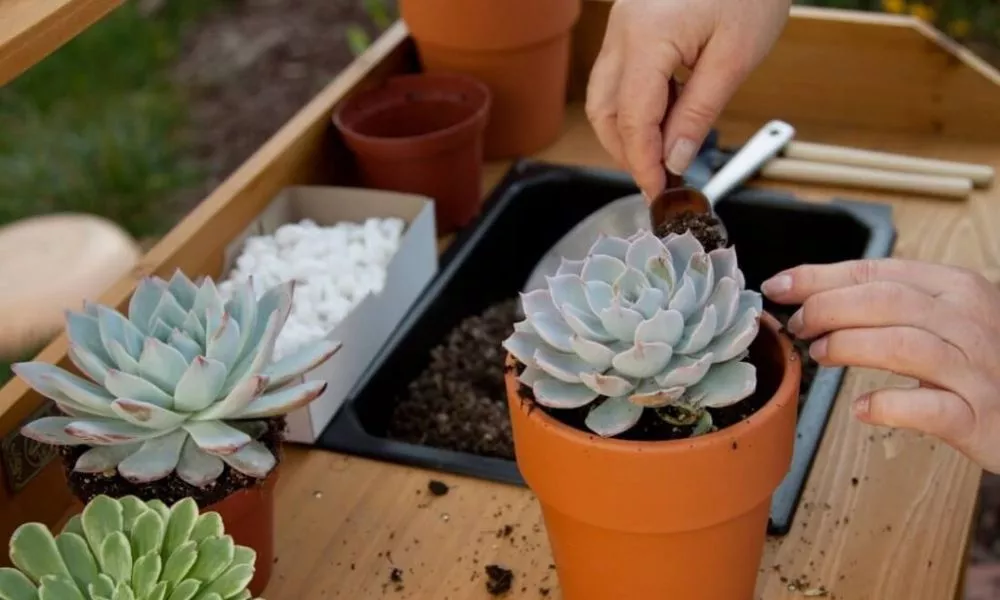
Table of Contents
Can You Leave Succulents Outside?
Yes! You can grow succulents outside, but they should be grown in such a way that they are offered some protection from any elements that could damage them.
Succulents can grow well both indoors and outdoors. A few minor considerations can make growing them outside a little tricky, though. These plants are used to being outdoors for as long as they have been discovered.
As humans do, we have taken a species that we thought was pretty and cultivated it in our world away from its place of origin.
When these occurrences happen, we can replicate their growing environment to a certain point, but we cannot re-create the exact growing conditions.
Succulents are found in more dry, arid, desert regions and are used to those types of climates and/or conditions. They have different types of soil or sand, nutrient qualities and even possible shade between other trees, shrubs, nooks and crannies.
The list goes on. Therefore, weather conditions they are not accustomed to, such as extreme colds, high-velocity winds and rain that buckets down, may cause issues when grown in the average home.
Should Succulent be Kept Inside or Outside?
Succulents can be grown successfully both inside and outside. Let’s look at some pros and cons of each growing environment.
Inside Pros
✅ The growing environment can be easily controlled, from planting them in the right pot with optimal growing materials and nutrients to sufficient light, humidity, water, and windbreaks.
✅ It can be grown all year round without worrying about the changing seasons.
✅ Aesthetically pleasing, it adds life to your home.
✅ An air purifier from certain toxins and/or chemicals. It can also humidify the air.
Inside Cons
❌ Having enough space for larger growing succulents.
❌ Living somewhere where the environmental conditions cannot be changed. Eg, insufficient sunlight causes the succulent to discolor and grow leggy.
❌ Exposed to certain bugs and diseases which can be difficult to treat.
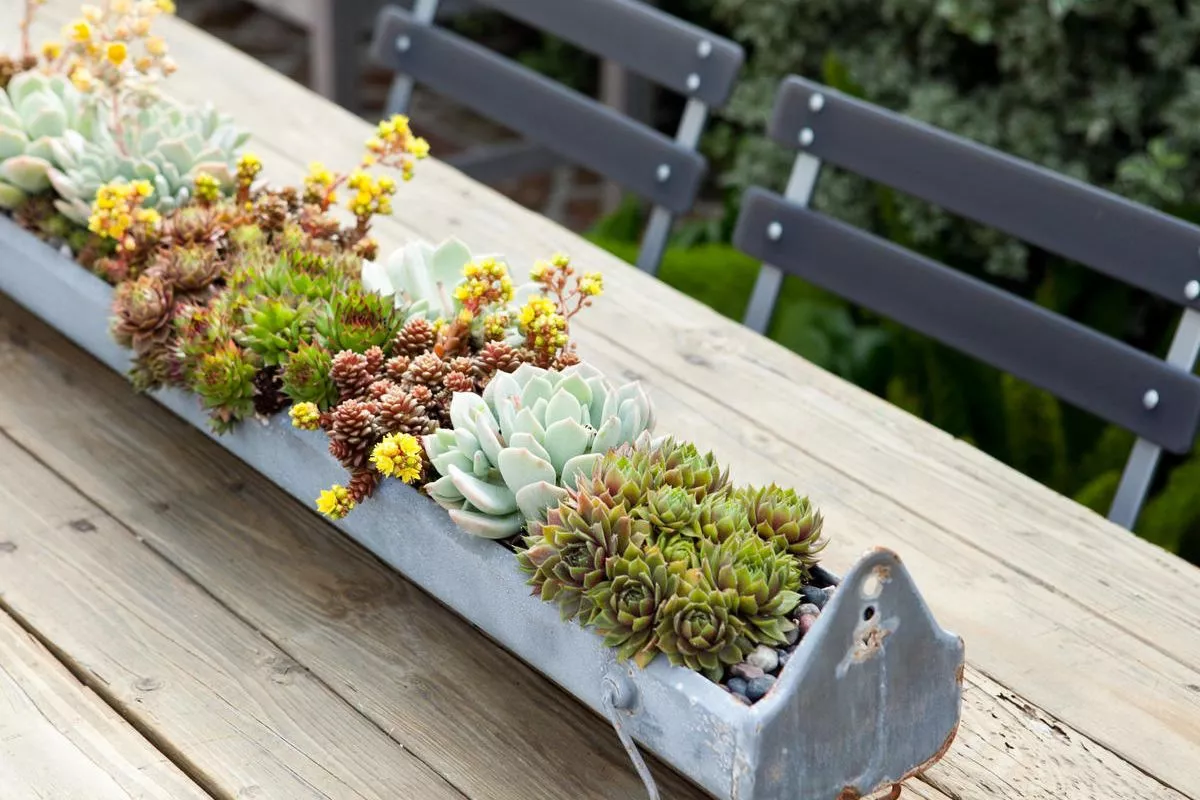
Outside Pros
✅ Ample space to spread out larger plants.
✅ Sufficient direct sunlight.
✅ Natural rain as opposed to the possible use of tap water filled with chemicals and other harmful minerals
✅ It can grow in a natural environment if that’s what type of location your home is.
Outside Cons
❌ Exposed to extreme temperatures such as frost or heat that can burn them.
❌ Exposure to potential heavy rains can disturb the plant’s soil and cause root rot.
❌ More attention needs to be applied when caring, especially watering. You may think it’s had enough water on a hot day but misjudge, and it shrivels up and dies.
❌ Exposed to endless pests and/or diseases which can go unnoticed.
Result:
After much debate, looking after a succulent plant indoors seems more logical. The environment can be controlled, and maintenance can be done without worrying about stepping outside.
Having them outside will require a little bit of extra planning, which of course, can also be done. It’s not to say that you can or shouldn’t grow them outside; it’s easier to grow indoors.
How to Grow Succulents Outside in a Proper Manner?
Growing succulents outside can do wonders for the aesthetics of your garden and/or yard. They are lush and green and oh so pretty!
Doing so can take a little prep work to ensure they can thrive and survive without hiccups. Let’s look at what it takes to plant and grow them so they have every opportunity to live their best lives outside!
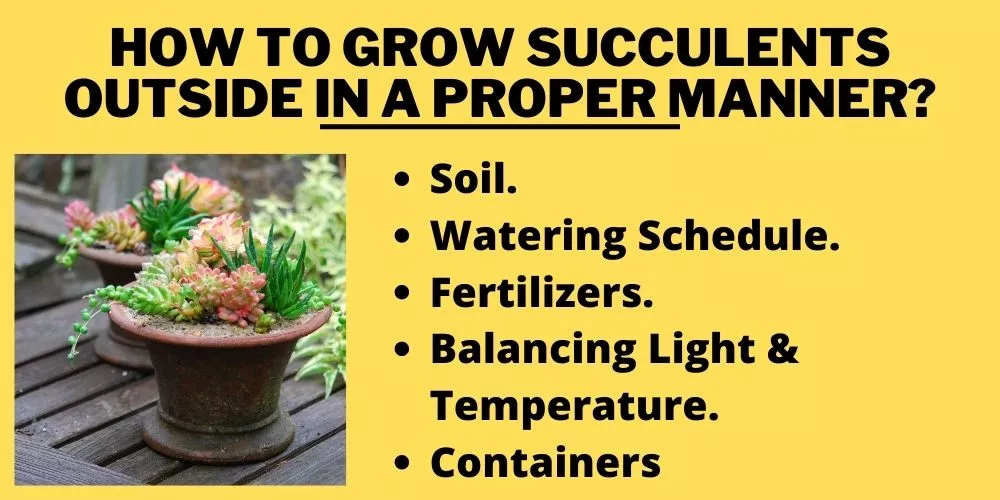
Soil
This is probably the most important aspect of growing a succulent. Because they need good quality, well-draining soil that will ultimately prevent them from getting root rot, they will more than likely suffer from excess rain at some point, so allowing the water to flow through the soil and back out again is a high priority.
Especially considering their root system is so shallow. It doesn’t take much for them to lay in a soggy soil mess. Succulents prefer a sandy loam-type material that is 50% to 80% coarse sand or fine gravel if you plan to plant them in the ground.
On the other hand, potted succulents are much suited to a coarse grit type mineral of about 1/ 8″ to 1/ 4″ in diameter. This can include coconut coir, pumice and perlite.
Surprisingly, succulents don’t need much fertilizer; a clean soil variety is perfectly fine.
Watering Schedule
Watering will need to be closely monitored. They are generally dormant during the colder months, so they only need water once a month. As the temperature sinks lower than 40°F (4-5°C), they will almost stop doing anything. Anything above that temperature will require good watering every 10-14 days.
Always check the status of the plant’s water. It’s very easy to think that the plant does not have enough, and you add a little more, and suddenly, the roots start to show signs of rot. Simply stick your finger in the soil and see if the top inch is dry; give it a slow drink and check again.
You also want to make sure that the soil is still draining now and then. The roots can start to the ball and stop some water from exiting the drainage holes.
Fertilizers
Succulents don’t need too much fertilization, but like all plants, they can benefit from the extra nutrients. It can help bring out those lush greens if it is little available in the soil.
You can either use a balanced fertilizer with a (15-15-15) ratio; you may also be able to find some good quality diluted fish emulsion or manure tea. All these options will balance out the levels and see your succulents thrive.
Balancing Light & Temperature
Succulents grow best in temperatures between 40-80°F (5-10°C). They also prefer at least 4-6 hours per day of direct sunlight. These optimal conditions can be created by planting them around other garden varieties that can offer shade from the harsh sun if necessary.
They can also be assisted by moving pots around to protect them from fluctuating temperatures and allow adequate sunlight. If they don’t receive enough sunlight, they will become stretched and leggy as they last grasp for any light they can find.
Containers
Terracotta and ceramic pots are the best choices for succulents as they are breathable. Both materials offer great drainage and air circulation. You will probably need something at least 4 inches deep to allow the roots.
Choose something with drainage holes, as drainage is vital for succulents’ survival. You can grow them in the ground, but you have a bigger advantage of soil choice when using a container.
Does Rain Affect Succulents?
Rain is great for any succulents growing outside, but the free-falling wet stuff does come with some risks. If your succulent is out in the middle of an open area and the rain is gushing down, the plant would most likely become damaged.
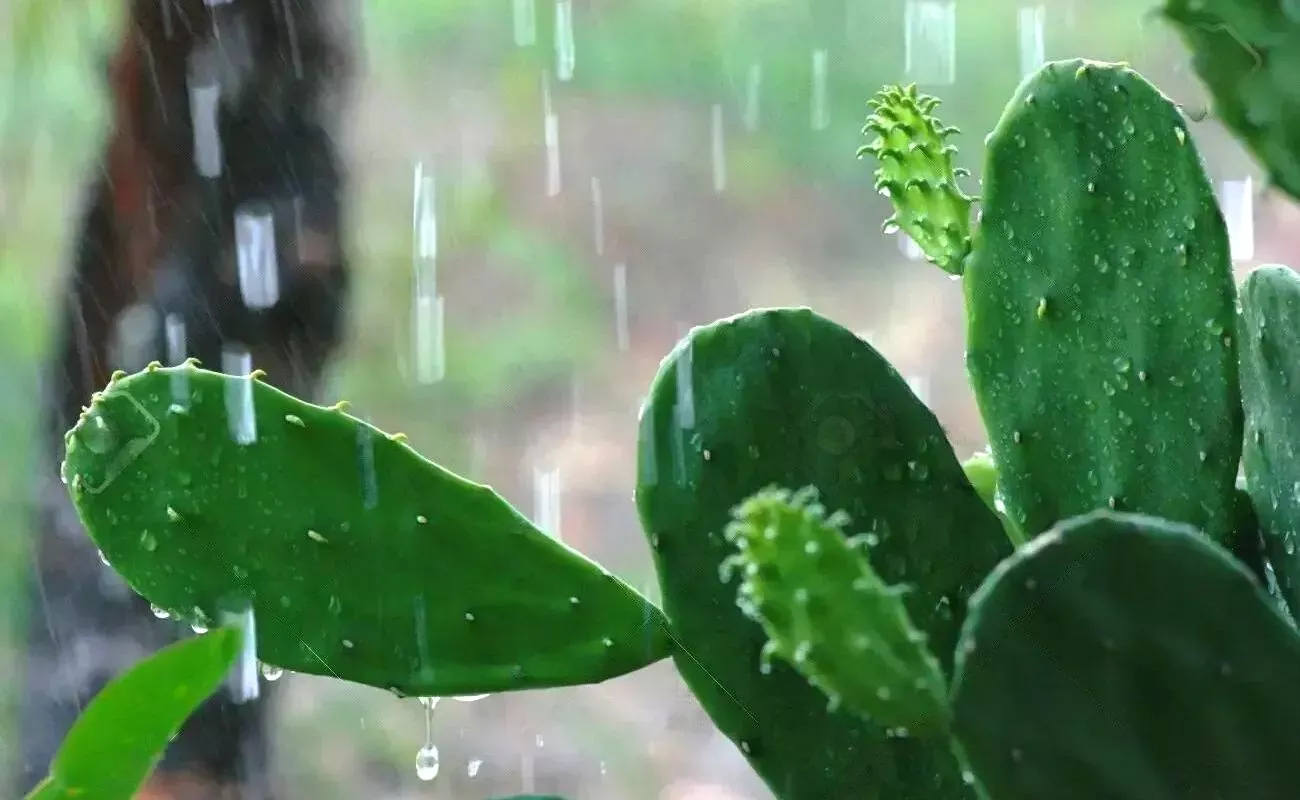
This is due to the soil you usually use to pot a succulent. The recommended growing material is generally a loamy sand blend, so when it gets pounded by rain, you can imagine how much it would splash around. This would cause the potted plant to dislodge and kill it if not discovered early.
Additionally, if it is under cover but still receives some rain, the excess water can restrict airflow and flood out the growing material, causing root rot.
Tips To Protect Succulents From Heavy Rain
After growing these plants for such a long period, you kind of work out all the little tricks and tips that can protect your plants from heavy rain. Here is a couple that we have found extremely helpful.
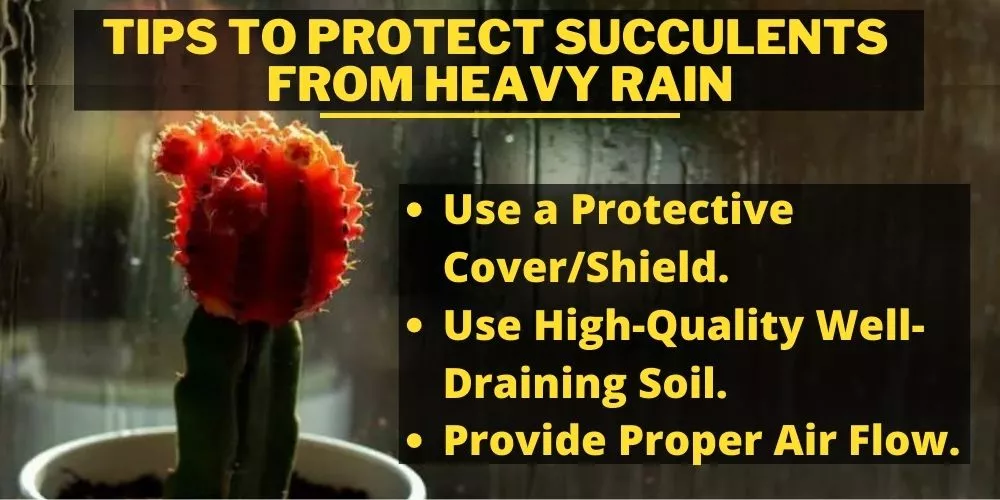
Use a Protective Cover/Shield
The easiest way to prevent heavy rains from damaging your succulents is by placing them under some kind of cover. For example, under a shade sail or porch covering. Moreover, you could set up some clear roll-down blinds around the edges of the growing area to stop the rain from coming in sideways.
Use High-Quality Well-Draining Soil
Well-draining soils for any succulents should be priority number one! Succulents have a shallow root system and need any excess water to be able to be drained away to reduce the risk of the root system forming root rot.
Loamy sand is ideal, but you can also use other great organic materials such as coconut coir, pumice and perlite.
Provide Proper Air Flow
Adequate airflow couples with proper drainage. If the soil is too heavy, the air won’t be able to find its way down to help deliver oxygen to the root system. Oxygen is needed to keep the root system healthy, which helps produce beautiful green leaves and stems.
Frequently Asked Questions (fAQs)
Can succulents be left outside overnight?
Succulents can be left outside overnight, providing they are not left in temperatures under 40°F (5°C) or fall victim to heavy rains.
Can you leave succulents outside in the winter?
You can have succulents outside in winter, but it all depends on what your winter is like in the location where you wish to grow your succulents. For example, colder regions such as Scandinavia, Nth America, Canada, etc., experience extreme chills during winter. Those chills will freeze the plants over, and they will most likely die as a result.
Comparatively, winters in warmer countries might benefit if their temperatures don’t sink lower than 40°F (5°C). They can receive much-needed respite from the hot sun and soak in any lighter rain that may reach them.
At what temperature do you need to bring succulents inside?
Anything under 40°F (5°C) can cause damage to your succulents. Their fresh, plump leaves, which serve as a storage facility for their moisture, will freeze up and make the succulent rot.
Conclusion:
As we have discovered, succulents can be left outside as long as they have some protection from the elements. They don’t like to be left out in temperatures colder than 40°F (5°C). Additionally, they don’t fare too well when battered by heavy rains.
It’s best to either grow them inside so you can control them or add some protection for them in the way of a covered area or even a greenhouse to keep them warm. We hope that this article has been helpful.


